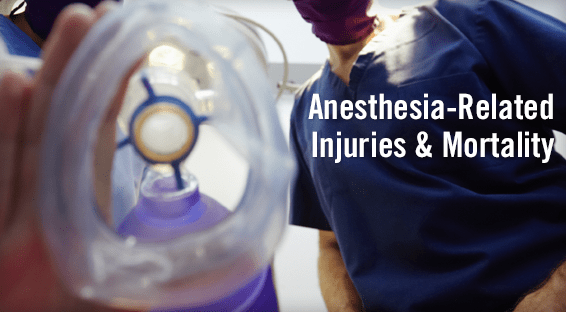There have been significant improvements in patient safety with the administration of anesthesia, and research has shown there has been a decline in anesthesia-related deaths. However, some studies suggest that patterns of anesthesia-related injuries are evolving. “While these events are infrequent, it’s important to understand the mechanisms of these injuries in order to improve outcomes,” says Darrell Ranum, JD, CPHRM.
A Claims Analysis
In a study published in the Journal of Healthcare Risk Management, Ranum and colleagues examined 607 anesthesia closed claims data from 2007 to 2012 that was collected by The Doctors Company, a large national malpractice insurer. According to the results, almost 80% of anesthesia technical performance claims resulted from complications that were explained to patients before their procedure. However, patients who filed claims may not have had sufficient knowledge to associate those risks with their injuries.
The analysis also showed that delayed responses to vital signs that deteriorated during surgery were sometimes the result of alarms being turned off or ignored. Obesity was identified as the most significant patient characteristic in claims and affected anesthesia outcomes more frequently than other comorbidities, such as heart disease and diabetes.
“The types of injuries were wide-ranging in terms of severity,” says Ranum. “Tooth damage was among the leading injuries from anesthesia, but more serious events like death, nerve and organ damage, pain, and cardiac arrest also occurred.” Injury-to-claim rates were highest in hospitals with fewer than 100 beds. Conversely, ambulatory surgery centers had the lowest death-to-claim rate at 12%. The average indemnity for an anesthesia claim was $309,066, compared with $291,000 for all physician specialties.
Planning Matters
Ranum says steps can be taken by physicians and patients to reduce anesthesia-related injuries. “Our results highlight the importance of physicians communicating with patients so that informed decisions are made,” he says. “We shouldn’t be lulled into believing that anesthesia is always completely safe. Clinicians should take time to assess patients thoroughly and identify potential risks, including obesity, obstructive sleep apnea, allergies, and other comorbidities.” A complete medical history and physical evaluations provide critical information that can help avoid anesthesia complications. Responses to patient complaints, such as back pain after spinal anesthesia, and neurological change should be quick.
Ranum says that the study provides physicians and hospitals with important information for promoting patient safety and reducing risks. “Knowing the patient’s history, their comorbidities, and their current status is essential for planning appropriate anesthesia and for anticipating potential intraoperative complications,” he says. “It’s also important to coordinate postoperative care with nurses.” He notes that future research should further evaluate trends from the study as well as the impact of specific patient comorbidities on anesthesia outcomes.



 Janine Anthes
Janine Anthes